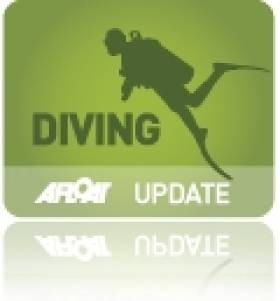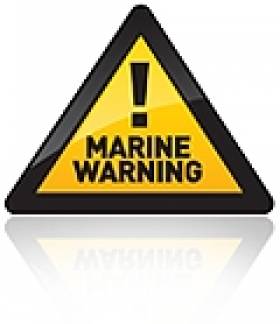Displaying items by tag: drowning
Diver Disappeared Close to Safety, Court Hears
The inquest into the drowning of diver Ann Howard has heard how she disappeared only feet from the safety of rocks off Arranmore Island.
The Irish Times reports that Howard, 41, was part of a team of eight divers from Manchester on an excursion at the popular Paradise Cavern dive site on 9 May 2008.
Howard and her 'dive buddy' Lee Harvey became separated from the rest of the group and were unable to locate them due to strong surface currents. When the pair got into difficulties, Harvey managed to scramble onto rocks and attract attention of passing boats. But when he returned to the water, Howard has disappeared.
Following an unsuccessful Coast Guard search, a Garda dive team found Howard's body 22 metres below on the seabed the following morning, close to where she had been last seen. Pathologist Dr Katriona Dillon found that her death was due to drowning.
Howard, from Ashton-under-Lyne, had 10 years' experience as a SCUBA diver, and according to her boyfriend had been familiar with her equipment used since 2002.
The Irish Times has more on the story HERE.
Stay Away from the Edge Warns Irish Water Safety
Irish Water Safety is asking people to keep away from the water's edge during the current violent storm force winds and high seas. Ireland averages 153 drownings every year and every year a number of tragedies occur as a result of people walking too close to the edge of coastal areas, cliffs, rivers and lakes during such stormy conditions.
Irish Water Safety is also asking those who own a small craft to make sure that it is well secured and when doing so, to wear a lifejacket at all times as there have been drownings during such activities in the past.
Motorists need to be particularly vigilant to avoid flooded areas on roads but particularly near rivers, because with poor light and short days it is not possible to determine the depth of floods easily. Swift water will carry cars and other vehicles away and there have been very tragic drownings in the past as a result of such accidents.
Children are naturally curious about water, therefore parents should caution them that floodwater hides the true depth and that manhole covers may be open and that small streams when swollen are very fast and deeper than normal.
What should I do when I hear a Flood Warning?
· Listen to the national and local radio for met eireann updates and AA Road watch updates
· Check on neighbours particularly if they are elderly, infirmed or families with young children
· Move your vehicles to higher ground
· Move animal stock to higher ground
· Check your small craft to ensure they are well secured or moored
· Make sure you have warm clothes, food, drink, a torch and radio.
· Block doorways and airbricks with sandbags or plastic bags filled with earth. Floodgate products will work effectively also.
· Switch off gas and electricity supplies if flooding is imminent.
· Check the time of High Water in the Newspaper.
· Check out www.flooding.ie for more detail on General flooding
Personal Safety
· Avoid flood waters at all times
· carry a mobile phone at all times in case you need to call for help - call 112 or 999 in emergency
· Wear suitable protective clothing & a lifejacket in on or around water
· Do not enter fast flowing water.
· Never put your feet down if swept away by fast flowing waters
· Flooding on roads will be deeper at dips and around bridges.
· Stay away from sea and flood defences.
· when walking or driving, be aware of manhole covers and gratings that may have been moved due to the heavy flow of water.
· Take care when using electric appliances in damp or flood conditions.
· Remember that during the hours of darkness the dangers are multiplied.
After the flood
· Avoid eating food that has been in contact with flood water.
· Run water for a few minutes and wash your taps.
· Check gas and electricity supply.
· Leave wet electrical equipment alone to dry and have it checked prior to use.
· Ventilate your property well.
· Check on elderly neighbours.
Howth Lifeboat Rescues Drowning Woman
The Lifeboat crew had been out on exercise when they spotted the 31 year old female struggling above the waves. She had sunk two feet beneath the water when the crew reached her. They managed to catch her clothing and pull her aboard the All Weather Lifeboat (ALB), immediately administering first aid.
The RNLI crew then took the lady safely to Howth harbour, as she was thought to be too distressed to be lifted by the Coastguard helicopter which was also in attendance. An awaiting ambulance brought her to Beaumont Hospital to recover.
Howth RNLI voluntary crewmember Dave Howard says:
"All the crew were relieved that this rescue had a positive ending, the lady would certainly have died had we not already been at sea on exercise. She was very lucky"
Related Safety posts
RNLI Lifeboats in Ireland
Safety News
Rescue News from RNLI Lifeboats in Ireland
Coast Guard News from Ireland
Water Safety News from Ireland
Marine Casualty Investigation Board News
Marine Warnings






























































